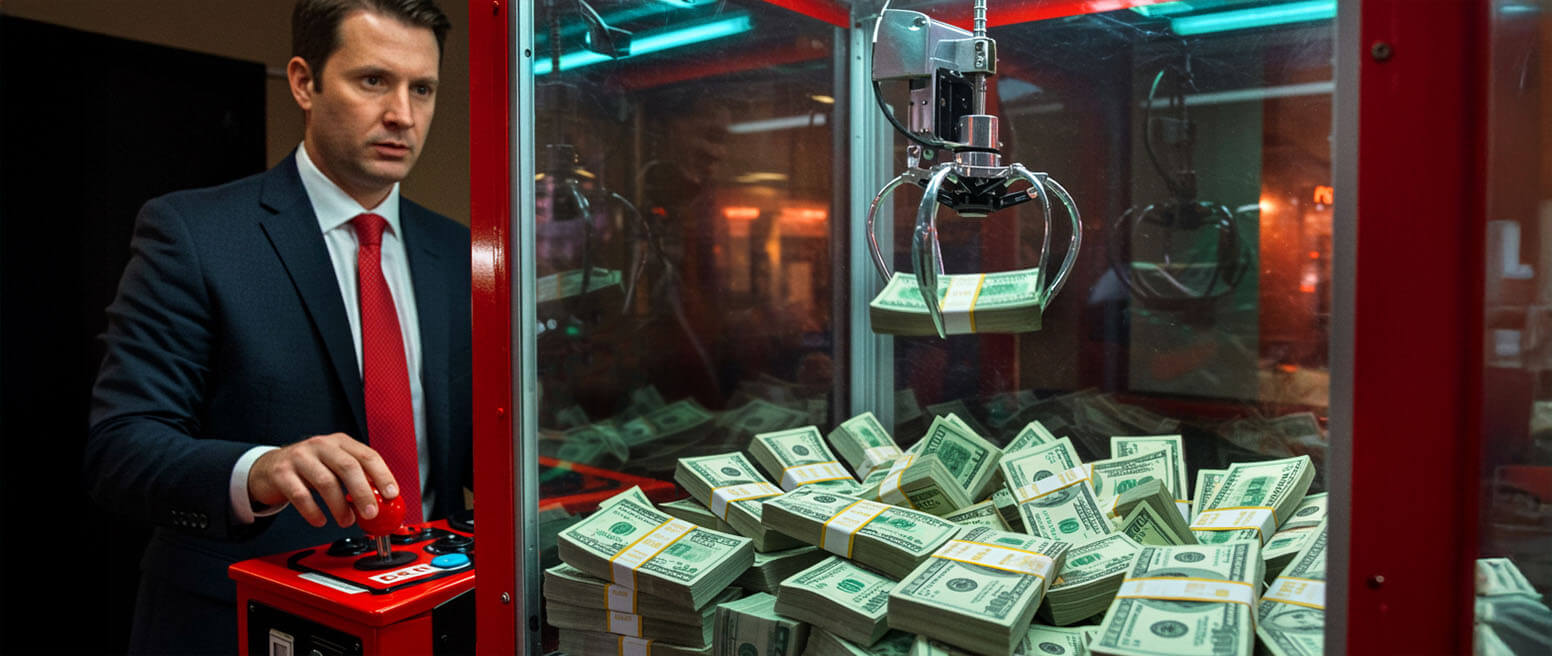What’s an “Acceptable” Chargeback Rate? Why Does Your Chargeback Rate Matter?
A high chargeback rate has the potential to upset your cash flow and limit your options for accepting payments. There are a lot of questions circulating around this topic, though. For instance, what exactly constitutes a “high” rate?
How do you calculate your chargeback rate? What’s considered “normal” for monthly chargeback issuances? And, if everyone’s rate is calculated differently, can a “normal” rate even really exist?
There’s a lot to unpack here. So, let’s start off with the basics.
Recommended reading
- How to Handle Chargebacks: 4 Easy Steps to Follow in 2025
- Chargeback Automation | Better Dispute Management
- Revenue Recovery: Tips & Best Practices to Reclaim Money
- Chargeback Accounting: How it Works | Tips & Best Practices
- Chargeback Reduction Plan: a Guide to Develop Your Strategy
- Chargeback Reports | Use Past Data to Stop Future Disputes
What is a Chargeback Rate?
- Chargeback Rate
A chargeback rate is a metric that shows the ratio between the total number of transactions a merchant processes and the total number of chargebacks the merchant receives.
[noun]/charj • bak • rāt/
A chargeback rate is sometimes referred to as a “chargeback ratio” or “chargeback-to-transaction ratio.”
In simple terms, this figure measures the number of incoming chargebacks you receive each month, relative to all the transactions you processed during that period. It’s a rough figure, but it helps give a general impression of your situation regarding chargeback issuances.
Banks and card networks use merchant chargeback rates as a key indicator. It helps them determine which merchants are “safe,” and which merchants might represent a liability.
Chargeback rate is not a great indicator, all things considered. There are a lot of extenuating circumstances that need to be factored in, like the number of transactions processed each month, product vertical, etc. We’ll discuss these later on, though. For now, let’s talk about how to calculate your current figure.
How to Calculate Your Chargeback Rate
Your chargeback rate is the number of disputes you incur in a given period of time divided by the total number of transactions you receive over the same time period.
We’ll start with an equation that’s about as close to standard as we can get. It’s not exact, but your chargeback rate is generally calculated using the following equation:
This seems simple enough. But, as mentioned above, other factors come into play. The biggest differentiator in calculating your chargeback rate is the card brand itself.
Both Mastercard and Visa use the equation shown above (total monthly chargebacks divided by total monthly transactions). There’s a catch, though; Visa divides your monthly chargebacks by the number of transactions processed during the same month, while Mastercard divides by the number of transactions processed in the previous month.
This chart helps illustrate the difference:
You’ll have a different rate for each card network because each brand only counts the transactions conducted on its own network. In other words, Visa only counts transactions and chargebacks that involve Visa cards. It’s possible to be compliant with chargeback rate limits on one network, and be in violation on another.
Why Does My Chargeback Rate Matter?
Card networks and acquiring banks use your chargeback rate as a measure of how risky you are to them as a customer. Rack up a high enough chargeback rate, and you can find yourself enrolled in a dispute monitoring program, hit with onerous penalties, or banned from opening up a merchant account.
We won’t mince words: your chargeback rate is one of the most important metrics you can track.
Your chargeback-to-transaction rate is a vital key performance indicator that can make or break your business. Fail to maintain an “acceptable” chargeback rate, and you could:
Face Restrictions On Your Operations
Visa and Mastercard both have special programs for merchants and acquirers who experience excessive chargebacks. The Visa Acquirer Monitoring Program, for example, is a mandatory program for acquirers whose monthly chargeback ratios exceed 750 disputes per month and 1% of transactions. Mastercard features a similar system known as the Excessive Chargeback Merchant program, or ECM. Sellers who surpass a 1.5% monthly chargeback rate may be forced to participate. In any case, sellers who join these programs will be subject to stricter rules and more stringent monitoring.
Learn more about excessive dispute programsPay Higher Fees
Merchants in either Visa or Mastercard’s chargeback monitoring programs will also be hit with higher fees. VAMP merchants, for instance, may be assessed $10 per each Visa card-not-present TC40 fraud and TC15 non-fraud dispute. Mastercard ECM participants will incur penalties that range from $0 to $200,000 per month, depending on how many consecutive months they stay in the program for.
Learn more about chargeback feesIncur Burdensome Reporting Costs
You could be required to present a chargeback reduction plan for consideration. These plans aren’t just time- and labor-intensive to draft; they’re also expensive to submit. The Mastercard ECM program, for instance, requires acquirers to submit a monthly report of your processing activities. Each submission ultimately costs the merchant between $50 and $300. Failure to file penalties are even steeper, and can exceed $1,000 per day.
Learn more about chargeback mitigation plansBe Forced to Establish a Merchant Account Reserve
Merchants who experience excessive chargebacks are seen as high-risk to acquirers. For this reason, banks may require you to establish a merchant account reserve. These are funds that must remain in a merchant account to “cushion” it against anticipated chargeback fees and transaction reversals. For sellers with already significant working capital needs, being forced to establish a merchant account reserve ties up much-needed funds that could be better deployed elsewhere.
Learn more about account reservesHave Your Accounts Frozen Or Terminated
Sometimes, none of these measures work. Because the merchant-acquirer relationship is voluntary, either party may terminate the relationship at any time, and for any (or no) reason at all, as long as it’s permitted under your service contract. It’s not uncommon for acquirers to simply freeze or close a merchant’s account altogether because of a surge in chargebacks — especially if the relationship is deemed to be too high-risk or unprofitable for the bank to maintain.
Learn more about closed merchant accountsBe Added to the MATCH List
In extreme cases, acquirers may add egregious offenders to the Member Alert to Control High-Risk Merchants (MATCH) list. Not only does this blacklist a merchant from signing up for services with that particular acquirer again in the future, it bans the merchant from opening accounts with most other acquirers as well. Put another way, the dreaded MATCH list is an industry-wide ban, not merely an acquirer-specific ban.
Learn more about the MATCH ListOnly “first” chargebacks count against your chargeback rate. So-called “second chargebacks” (referred to as “arbitration chargebacks” by Mastercard and “dispute response reversals” by Visa) won’t impact your numbers.
What’s an “Acceptable” Chargeback Rate?
There’s not one universal answer, but generally speaking, an “acceptable” chargeback rate is anything under 0.9%. This puts you below both Visa and Mastercard’s excessive chargeback thresholds. To play it safe, however, you may want to aim for a ratio of 0.65% or below; this puts you below Visa’s “Early Warning” threshold.
Many merchants believe that a 1% chargeback rate is the standard threshold. This is an outdated rule of thumb, though.
Visa and Mastercard each set their own acceptable chargeback thresholds, and there are multiple different figures to reference. Back in 2019, for instance, Visa set their standard threshold at 0.9% of monthly transactions, as calculated using the formula outlined above. Their “Early Warning” threshold sits at 0.65% of monthly transactions.
For Mastercard, their “Chargeback Monitored Merchant” status has a threshold of 100 chargebacks per month and a ratio of at least 1%. For their “Excessive Chargeback Merchant” designation, the standard is at least 100 chargebacks per month and a ratio of at least 1.5% for two consecutive months.
Learn more about chargeback rate limitsAcquirers are ultimately liable for every merchant with whom they do business. So, if the dollar value of your outstanding chargeback liabilities exceeds the amount available in your account, the acquirer would have to cover the shortfall.
If you’re experiencing a surge in your chargeback rate, your acquirer may temporarily freeze your account. This isn’t a personal attack; it’s done as a way to help banks manage their own risk exposure.
Of course, as we’ll see in the next section, some business models and product verticals will unavoidably carry greater risk, and see higher average chargeback rates.
Average Chargeback Rates By Industry
The industry your business operates within can have a major impact on your chargeback rate. The same goes for the amount of transactions you process each month.
With regard to both points, some industries are generally at higher risk for fraud and chargebacks:
It’s important to note that these figures were compiled before the Covid–19 outbreak. It’s likely that the average chargeback rate in all of the verticals outlined above is higher than before.
Other Factors Influencing Your Chargeback Rate
Network rules, the number of transactions you process in a given time period, and whether you receive pre-arbitration or arbitration chargebacks will influence your chargeback rate.
As we’ve noted, card network rules can impact what’s considered “acceptable,” as can your acquirer. There are also other variables to consider, though.
The number of transactions you process each month can impact your chargeback rate. The same goes for the average dollar value of your transactions; for example, a small business with a small number of sales each month may get a bit more leeway than a large operation in a high-risk vertical. However, this can actually work against you when calculating your dispute rate.
You may have less flexibility if you already have a history of receiving chargebacks. However, your acquirer may be more inclined to cut you some slack if you have a better record of avoiding chargebacks.
Also, only “first” chargebacks count against your chargeback rate. So-called “second chargebacks” (referred to as “arbitration chargebacks” by Mastercard and “dispute response reversals” by Visa) won’t impact your chargeback numbers.
How to Keep Your Chargeback Rate Low
The best way to reduce your chargeback rate is to prevent disputes from happening in the first place. Minimizing merchant errors, using clearer billing descriptors, prioritizing customer service, and proactively issuing refunds are all great ideas.
Of course, it’s important to remember that many chargebacks are cases of first-party fraud. These are invalid chargeback scams, and you have the right to challenge them through the representment process.
If you challenge a customer dispute and win, you can recapture all (or a portion) of the amount disputed. Unfortunately, this is a time-consuming and expensive process for everyone involved. Also, it will not undo the damage regarding your chargeback rate.
Chargeback rates are calculated using the total number of chargebacks issued. This is true regardless of whether they get reversed later.
It’s crucial that you do everything in your power to prevent chargebacks before they happen. To keep a lower chargeback rate, you must implement a comprehensive prevention strategy that addresses the top three chargeback sources: merchant error, third-party fraud, and first-party fraud. Among other things, you should:
Worried about your chargeback rate? We’re here to help. Chargebacks911® specializes in assisting merchants who are in danger of losing their credit card processing ability due to excessive chargebacks.
FAQs
What is a chargeback rate?
A chargeback rate is a metric that shows the ratio between the total number of transactions a merchant processes and the total number of chargebacks the merchant receives.
What is a normal chargeback rate?
Generally speaking, a rate above 1% is deemed unacceptable. The exact allowable rate, however, often varies depending on factors in including the card brand, business vertical, and chargeback history.
How is my chargeback rate calculated?
The number of chargebacks in a month is divided by either the number of transactions processed during that same month (Visa) or by the number of transactions in the previous month (Mastercard).
What variables can impact my allowable chargeback rate?
Your allowable chargeback rate can be influenced by any number of factors, including your business type, your chargeback history, the card brand, the acquirer, and more.
How do you find your chargeback rate?
To find your Visa chargeback rate, take the number of chargebacks you received during the last month, and divide that figure by the number of transactions processed during the same month. To find your Mastercard chargeback rate, take the number of chargebacks you received during the last month, and divide that by the number of transactions processed in the previous month. Then, simply multiply by 100 to find your chargeback rate expressed as a percentage.
Why are chargeback fees so high?
Chargeback fees are high (and range between $20 and $100 per filed dispute) for several reasons. First, chargebacks are costly and time-consuming for acquirers to administer, and chargeback fees help banks recoup some of those costs. Next, chargeback fees are used to offset merchant risks; the greater the risk, the higher the fee. Finally, dispute fees serve a punitive purpose — like speeding tickets, high chargeback fees compel merchants to take swift corrective action against errors and omissions that cause disputes.
How do you reduce your chargeback rate?
You can reduce your chargeback rate by incurring fewer chargebacks. Technically, you can do this in one of two ways. You can either reduce the raw number of disputes you receive, or you can process more transactions over a given time period without incurring additional chargebacks.
















